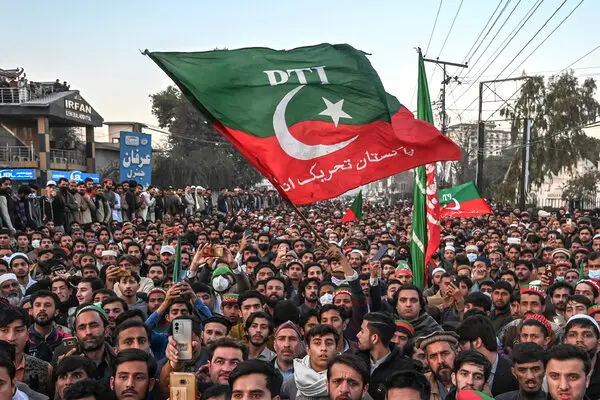Pakistan is currently grappling with a significant political deadlock as key parties struggle to secure a clear majority in the 336-member National Assembly. The two prominent contenders, Nawaz Sharif’s Pakistan Muslim League (N) and Bilawal Bhutto Zardari’s Pakistan Peoples Party (PPP), have not emerged as outright winners in the election.
The deadlock situation is further complicated by the fact that independent candidates supported by Imran Khan’s Pakistan Tehreek-e-Insaf (PTI) are leading the race. However, due to the absence of a party symbol, PTI-backed independents cannot independently form the government.
In the event that no party is able to secure a majority and form a government, Pakistan’s powerful military, historically known for its intervention in political affairs, may step in to restore order. The army has intervened in the country’s governance several times in its 76-year history, the most recent being in 1999 when then-Army Chief General Pervez Musharraf overthrew Nawaz Sharif’s government.
Despite the looming possibility of military intervention, the current army chief has urged political parties to exhibit “maturity and unity” in navigating the country’s political landscape.
Amidst this uncertainty, several potential scenarios have emerged regarding the formation of a new government:
Coalition Government Led by Nawaz Sharif and Shehbaz Sharif:
Nawaz Sharif’s party, PML-N, has reportedly secured 74 seats, while PPP, led by Bilawal Bhutto Zardari, has won 53 seats. In this scenario, the two parties, along with other smaller factions such as MQM-P, PML-Q, and IPP, may come together to form a coalition government. However, tensions between PML-N and PPP could hinder this coalition, as PPP has reportedly demanded that Bilawal Bhutto Zardari be appointed as the Prime Minister in exchange for forming a coalition government with PML-N.
Coalition Government Led by Bilawal Bhutto Zardari:
In this scenario, PPP takes the lead in forming a coalition government, leveraging its position as a crucial player in the political landscape. With neither Nawaz Sharif nor Imran Khan’s candidates able to secure a majority without PPP’s support, the party may negotiate to have Bilawal Bhutto Zardari appointed as Prime Minister.
Rise of Imran Khan’s Independents to Power:
Independent candidates backed by Imran Khan’s PTI have won 93 seats. While independent candidates cannot independently form a government, they may join forces with smaller parties in Parliament to create a unified bloc. This alliance could help them meet the requirement for allocation of reserved seats and pave the way for them to nominate a candidate for Prime Minister. Alternatively, they could negotiate with other parties to support a consensus candidate aligned with PTI’s agenda.
It’s worth noting that Imran Khan himself is ineligible to become Prime Minister under current circumstances. However, PTI supporters may push for allies to align with Khan’s political vision and potentially secure the release of their jailed leader under certain agreements.
Additionally, some independent candidates backed by PTI, such as Waseem Qadir, have already aligned themselves with Nawaz Sharif’s PML-N. According to Pakistan’s election rules, independent candidates have three days following their victory notification to join a party.
The political deadlock in Pakistan underscores the complex and often tumultuous nature of its democratic process. With multiple parties vying for power and alliances constantly shifting, the formation of a stable government remains uncertain. However, the country’s democratic institutions and the resilience of its political leaders will play a crucial role in navigating these challenges and charting a path forward for Pakistan’s governance.
